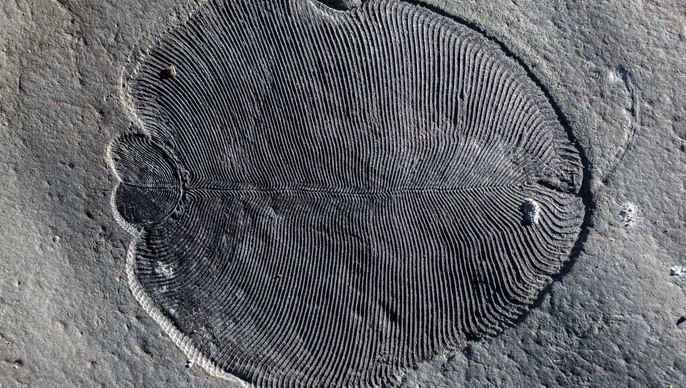The report which was published in the journal ‘Gondwana Research’ has asserted the presence of the organism ‘Dickinsonia’ in the fossils. Scientists have been relating the relevance of these findings to the evolution of the earliest living organism.
Our ancient history and the way mankind evolved over the course of billions of years remains to be an entangled mystery. As scientific technology is getting advanced, mysterious revelations get unfolded on the horizon. In this regard, recent findings in Bhimbetka in central India have led to a crucial breakthrough regarding the origin of life before human beings inhabited the Earth.
The cave art in Bhimbetka near Bhopal dates back to paleolithic and mesolithic times. Moreover, fossils dating back to 550 million years ago have also been found there. These fossils are said to have originated before the origin of human beings in the period called the Cambrian period. After these findings, India has joined the list of the Ediacaran era with Australia and Russia where there was some sort of life forms even before the birth of humans.
The report which was published in the journal ‘Gondwana Research’ has led to revelations that have excited the scientific community. These findings have substantially asserted the presence of the organism ‘Dickinsonia’ in the fossils. The scientists have been relating the relevance of these findings with the evolution of the earliest living organism during the Ediacaran period named after Ediacara hills in Australia.
What is Dickinsonia?
Dickinsonia fossil which is equal to the size of one meter has already been found in Russia and Australia. The period between Earth’s history when several multicellular organisms and Dickinson might have existed. These organisms were present on the planet almost 635 million years to 541 million years ago. These living creatures are called Vendobionts.
These Dickinsonia fossils that have been discovered were found on the rooftop of Bhimbetka caves. They have been preserved in the rock shelters in the Maihar sandstone of the Bhandar group. The age of the youngest Maihar sandstone is found to be that of 548 million years ago. With that, the age of some other fossil fuels in Son and Chambal regions have also got their age in range from 978 million years to 1073 million years. With this, it is being predicted that the fossils belong to the old Tonian period.
The age of these fossils has been found using the Zircon dating technique. The age of Maihar’s Dickinsonia has been found to be quite relevant to that of the fossils found in Russia’s White Sea region 555 million years ago. Along with this, fossils named Dickinsonia Tenuis and Dickinsonia Costata in South Australia have also been found to have their age to be somewhere around 555 million years ago.
The rocks that have been discovered in Bhimbetka also share characteristics with the rocks that were found in Australia as far as texture is concerned. In addition to this, the evolution period of these fossils is almost similar to 550 million years ago.
The link between India and Australia
Dickinsonia fossils found in Madhya Pradesh are also found to be quite similar to Rawnsley Quartzite found in Australia. This provides enough evidence regarding the proximity of landmasses of India and Australia during that era on Gondwanaland. Also, these fossils were found to lack any trace of skeletons or any exterior structure further proving that when they were formed, there might not have been any predators.
This also suggests that these organisms formed when only creatures like Metazoa used to be present in water. Further, the presence of such fossils in deep oceans also throws light on the type of environment fossils like Dickinsonia might have grown in the ancient geological period. Other than that some researchers even argue on the nature of Dickinsonia. Some scientists have also found cholestroids in preserved water using biomarkers in Dickinsonia.

